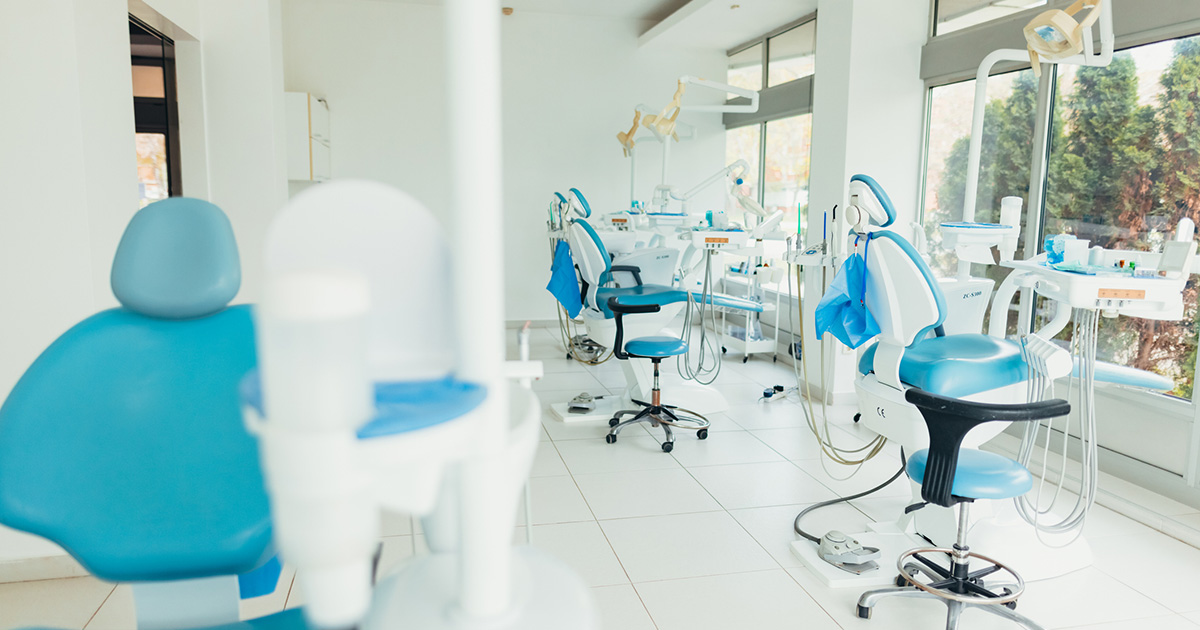From Customers to Patients: Using Corporate CX Playbooks to Fuel Orthodontic Growth

Improve Every Step of the Orthodontic Patient Experience
Key Takeaways
- Patient experience (PX) impacts every stage of the orthodontic journey, from scheduling to referrals.
- Tracking satisfaction through tools like NPS and PSAT reveals where friction is hurting growth.
- Compliance issues often point to experience gaps, not just patient behavior.
- Gaidge 360 Consulting gives you expert support to turn PX into your most powerful growth strategy.
Customer Experience (CX) has become a strategic priority in the corporate world. Major brands reduce friction, improve satisfaction, and build loyalty through strategic CX.
In orthodontics, we may not call it “CX,” but the same principles apply.
By treating it as the orthodontic patient experience (PX), we can apply strategies from Fortune 500 brands to our patients’ unique journey (from first call to post-treatment revenue).
Seeing patients as care recipients and informed consumers can lead to better systems, more referrals, and higher case acceptance.
So, how can small orthodontic practices take the best of CX and apply it meaningfully to PX? Let’s break it down.
Why Orthodontic Patient Experience (PX) Matters
Orthodontic practices focus heavily on getting to “yes”—moving a potential patient from interest to treatment acceptance. However, the experience after that “yes” is just as critical. Every interaction, from scheduling to treatment follow-ups, shapes how patients perceive your practice and whether they recommend you to friends and family.
In the corporate world, CX teams track this kind of loyalty using Net Promoter Score (NPS). High scores often predict long-term growth, as satisfied customers drive referrals and repeat business.
We should treat the orthodontic patient experience as our version of CX and measure how well we deliver care, educate patients, and reduce friction. Just as businesses track NPS to gauge loyalty, orthodontic practices can use Patient NPS to assess satisfaction, compliance, and likelihood to recommend.
The Power of Word-of-Mouth Referrals
Marketing for orthodontics is relationship-driven, and the data makes it clear:
- 77% of patients start their search for a healthcare provider by reading online reviews.
- 84% of patients won’t choose a provider with a rating below four stars.
- 92% of consumers trust referrals from friends and family over all other types of advertising.
For orthodontic practices, this means one satisfied family can lead to multiple new patients. It’s an organic and cost-effective way to grow the business.
However, earning these referrals takes more than great clinical results. It takes a thoughtful patient experience that makes every interaction positive, easy, and worth talking about.
Building the “Loyalty Loop” in Orthodontics
In CX, the Loyalty Loop refers to the cycle of a happy customer continuing to engage with a brand and referring new customers into the pipeline. Orthodontic practices can build a PX-based Loyalty Loop by ensuring three key elements:
1. Seamless First Impressions (The “Onboarding” Phase)
- Is your scheduling process easy and intuitive?
- Do new patients feel welcomed and guided through their options?
- Are financial options clear and stress-free?
Suggestion: Before the first visit, consider online scheduling, digital intake forms, automated appointment reminders, and clearly outlined financial options.
2. Exceptional Treatment Experience (The “Usage” Phase)
- Do patients feel educated about their treatment?
- Are appointments running on time and smoothly coordinated?
- Are team members engaging with patients beyond clinical care?
Suggestion: Track how well patients understand their treatment plan, including elastic wear, oral hygiene, and appliance care. Their compliance is a direct reflection of how well we are educating them.
3. Ongoing Engagement & Referrals (The “Advocacy” Phase)
- Are you measuring patient satisfaction throughout treatment?
- Do you actively ask for feedback and reviews?
- Are you creating moments that make patients want to share their experience?
Suggestion: Introduce a simple post-visit survey or text check-in after key milestones. Patients who report high satisfaction should be encouraged to leave a review or refer a friend.
Measuring PX: How to Quantify Orthodontic Patient Satisfaction
Just as corporate CX departments track NPS, CSAT, and customer retention, orthodontic practices can—and should—measure similar indicators to assess how well they deliver the patient experience.
1. Net Promoter Score (NPS) for Orthodontics
A traditional NPS survey asks:
"On a scale of 1-10, how likely are you to recommend us to a friend or family member?"
Patients who score:
- 9-10 are Promoters (loyal fans likely to refer others)
- 7-8 are Passive (satisfied but not actively referring)
- 0-6 are Detractors (unhappy patients who may discourage others)
Tracking Patient NPS over time can reveal trends in what’s working and what needs improvement.
1b. Patient Satisfaction Score (PSAT): A Quick Pulse on Experience
NPS measures long-term loyalty, while PSAT (Patient Satisfaction Score) gives a quick read on satisfaction after a single interaction.
A typical PSAT survey asks:
“How satisfied were you with your experience today?”
Rated from 1 (very dissatisfied) to 5 (very satisfied).
Why PSAT matters:
- Helps uncover friction in real time, before it becomes a pattern
- Encourages timely feedback at critical points in the journey
- Highlights high-performing team members and areas for improvement
How to use PSAT in your practice:
- Send a one-question PSAT survey via text or email after key appointments (new patient exams, financial consults, debond visits)
- Track scores by appointment type to identify operational trends
- Use insights to coach team members and improve communication or efficiency
By pairing Patient NPS (long-term loyalty) with PSAT (moment-specific satisfaction), you gain a complete, actionable picture of the patient experience across the treatment timeline.
2. Treatment Compliance as a PX Indicator
Orthodontic patient compliance with elastics, oral hygiene, and aligner wear is a direct reflection of:
- How well we educate patients on treatment expectations
- How engaged we are in coaching and celebrating progress
How to track it:
- Log elastic compliance during visits
- Monitor hygiene scores over time
- Track delays due to non-compliance and assess patient understanding
If compliance is low, it’s not just a patient issue; it’s a patient experience issue. Patients don’t follow instructions if they don’t understand or feel supported.
3. Conversion & Retention Metrics
Beyond tracking starts, evaluate:
- How many patients drop out before starting treatment?
- How many cancel after the initial exam?
- How many reschedule multiple times before committing?
- How many continue care beyond Phase 1 or Phase 2?
If patients lose interest before starting treatment, there may be friction in the experience that needs attention.

Feelings vs. Facts: Why You Need Real Data on Patient Satisfaction
In today’s competitive landscape, it’s tempting to focus on digital campaigns and paid ads to bring in new leads. But if you’re not measuring how current patients actually feel, you’re missing one of your most powerful (and cost-effective) growth tools.
In 2025, marketing recommendations emphasize authentic experiences and peer referrals. That means what your patients say about you carries more weight than anything you post.
By measuring real-time satisfaction with tools like NPS and PSAT, you gain clarity on what’s working, what’s not, and where friction may be costing you referrals or retention. This data empowers your team to improve experience intentionally, not just assume it's going well.
When building your 2025 marketing budget, plan to invest in:
- Gathering and analyzing patient feedback
- Training your team to create review-worthy experiences
- Building campaigns that showcase satisfied patient stories
- Turning internal satisfaction into external growth
No amount of ad spend can beat a happy patient who tells five friends you're the one to trust.
Make Patient Experience Part of Your Orthodontic Growth Strategy
Adopting a patient experience mindset isn’t about adding complexity. It’s about improving each step of the patient journey.
That focus can lead to:
- Higher case acceptance
- Stronger compliance
- More referrals
- Greater loyalty
By learning from corporate CX strategies and applying them thoughtfully in your practice, you can boost satisfaction and practice growth while delivering outstanding clinical care.
So, the next time you evaluate performance, don’t just look at starts or collections. Ask yourself:
- Are we making treatment easy and seamless for families?
- Are we reducing friction in scheduling, financing, and communication?
- Are we proactively measuring Patient NPS and PSAT?
- Are we creating a Loyalty Loop that turns satisfied patients into brand advocates?
Because in the end, a remarkable patient experience doesn’t just create great smiles. It creates lasting trust and long-term growth.
Too many practices overlook patient experience. Reach out to Gaidge 360 Consulting and turn PX into your biggest growth opportunity.
About the Author

Jessica Bryson is the Director of Consulting at Gaidge 360. With over 17 years in orthodontics, she helps practices improve case acceptance, team performance, and patient conversion. Her hands-on approach combines deep operational knowledge with tailored training that strengthens every step of the patient journey.
Orthodontic Patient Experience FAQs
Why do strong leads sometimes fail to convert after the exam? Families may hesitate due to unclear next steps, financial confusion, or lack of follow-up. Without structured communication, even excited prospects can lose interest quickly.
What red flags tell us our patient journey needs work? Frequent no-shows, slow response times, low Phase 2 continuation, or poor review volume are early warning signs. These often signal internal friction that patients won’t always tell you directly.
How do we know if our follow-up process is helping or hurting conversion? If your case acceptance rates are slipping, audit how and when you follow up. Timeliness, clarity, and tone matter more than volume. Patients need fast answers and confidence, not repeated check-ins.
How can Gaidge help us see where patients drop off? Gaidge visualizes each step—from consult to contract—and flags patterns like reschedules, cancellations, and missed goals. It turns day-to-day activity into data you can act on.
What can Gaidge 360 Consulting do that we can’t fix ourselves? Consultants bring tested systems, outside perspective, and real-time coaching to strengthen your new patient process. If you’re busy reacting and not improving, it’s time to bring in support.
Freedman, M. (2024, January 17). Why Word of Mouth Trumps Traditional Advertising. Business News Daily. https://www.businessnewsdaily.com/2353-consumer-ad-trust.html
Sener, C. (2023, May 2). Online reviews are becoming more important to patients in choosing their care: How to manage your online reputation in health care. MedicalEconomics. https://www.medicaleconomics.com/view/online-reviews-are-becoming-more-important-to-patients-in-choosing-their-care-how-to-manage-your-online-reputation-in-health-care




